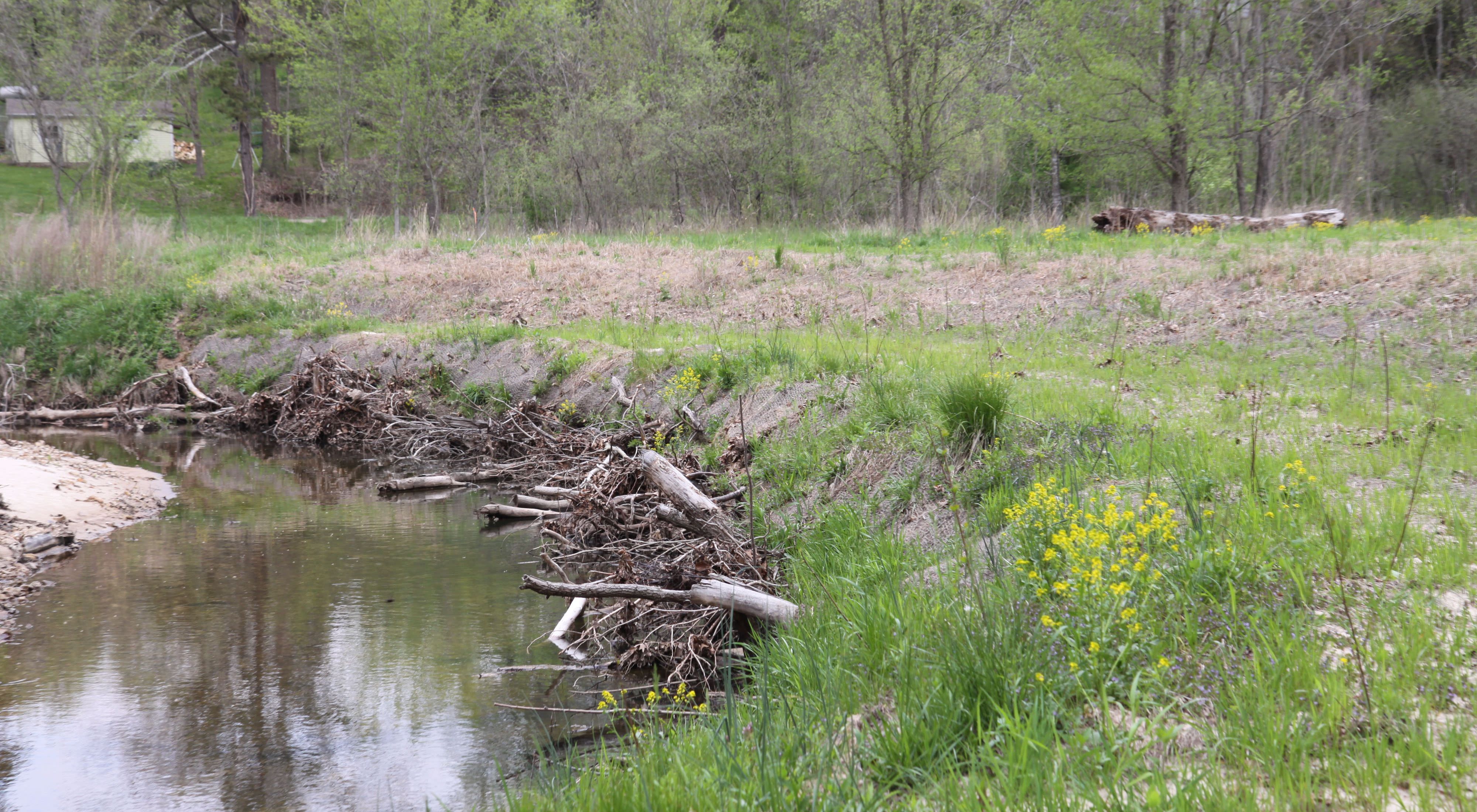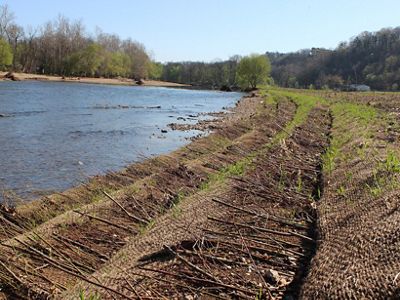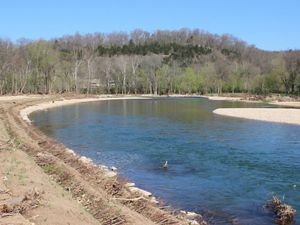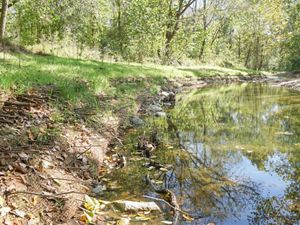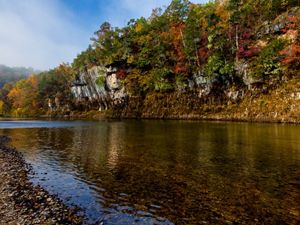Quote: Dr. Steve Herrington
We want long-lasting solutions for these streambanks – solutions that not only protect the quality of the water for people but also provides a hospitable environment for fish and wildlife.
LaBarque Creek is the most biologically diverse creek that flows into the Meramec River in the St. Louis area. It’s home to over 40 fish species and runs approximately 6 miles before it reaches the Meramec, just south of Eureka, MO.
In 2016, Washington University’s Tyson Research Center contacted The Nature Conservancy to discuss options for an extremely eroding streambank on a tight bend of the creek located on their property in Jefferson County.
“It’s a 250-foot stretch of streambank that has dumped over 400 tons of soil and sediment into the creek over the past few years,” said Dr. Steve Herrington, The Nature Conservancy’s Director of Science and Impact Measures in Missouri. “That sediment is polluting the water and destroying fish and wildlife habitat.”
Eroding streambanks, like this one at LaBarque Creek, are among the biggest threats to our rivers and streams in Missouri – and across the country. “Landowners are losing their land; it’s taking more money and equipment to provide clean drinking water to our communities, and we are losing aquatic habitat for hundreds of species,” said Herrington.
Traditionally, in Missouri, a streambank like this would be secured using rip-rap, which is quarry rock that is dumped along the banks. This option only protects the surface of the streambank, can be prone to failure and provides very little ecological benefits. “We want long-lasting solutions for these streambanks – solutions that not only protect the quality of the water for people but also provides a hospitable environment for fish and wildlife,” said Herrington.
Fortunately, there are other options – bioengineering techniques that use natural materials like trees, brush, and live plantings to rebuild and stabilize the bank to replicate the original bank. These techniques are commonly used throughout the county but rarely implemented in Missouri.
Techniques used at LaBarque Creek can be replicated across the state on larger scale systems - making a greater impact to our rivers and streams.
ABOUT THE TECHNIQUE
For this site, contractors started by digging back the eroded streambank and reshaping the stream to its natural channel. Then, they took trees that were harvested from the property and laid them perpendicular to the creek - this layer also included brush, woody plants, and tree cuttings. That was then covered with a biodegradable cloth and topped with dirt. That layering process continued until it was built back up to the point where the creek floods naturally. From that level, they replicated a floodplain to give rising waters a place to disperse during periods of heavy rain.
A similar technique was used on the Elk River in southwest Missouri to restore a 1,650 ft eroding streambank.
TRANSFORMING PRACTICES
Construction on this site began in the summer of 2017 and was completed in just over a week. During that week, The Nature Conservancy held a partner day, to allow interested agencies, organizations, and stakeholders the opportunity to see first-hand the process and benefits of using bioengineering solutions. Representatives from state and federal agencies including the Department of Natural Resources (DNR), U.S. Fish and Wildlife Service (USFWS), and the U.S. Army Corps of Engineers (USACE) all participated.
“The USACE is currently developing design approaches for stream restoration in the Meramec and Big rivers,” said Herrington. “Having them visit our demonstration site to see the process will help inform how they can use these techniques on a larger scale for a greater impact.” The USACE currently has proposed over 40 sites for stream restoration and we are happy to say that all will incorporate bioengineering techniques to the maximum degree possible — which is a win for both people and nature.
PROJECT UPDATES
The Nature Conservancy, along with our contractors and Tyson Research Center will continue to monitor the streambank for the next two years to see if it geomorphology changes over time - measuring for physical and biological responses to the restoration. We are also happy to report that the structure has held up through multiple flood events that the site has experienced since the completion of the restoration. Past flood events - prior to the restoration - would result in an increase in erosion of the streambank and sediment into the water.
We are also working with researchers who collected fish data from this location several years ago to return to the site and re-survey now that it has been restored.
